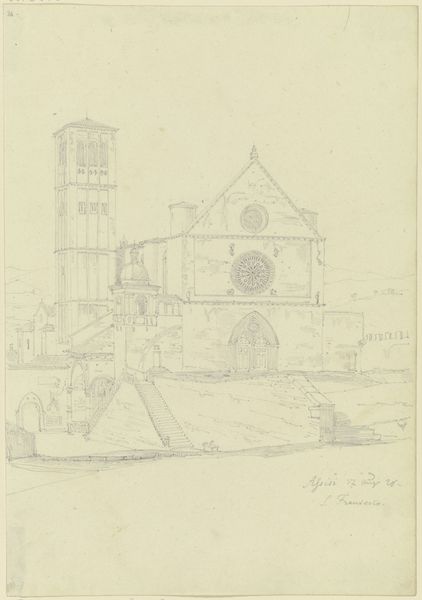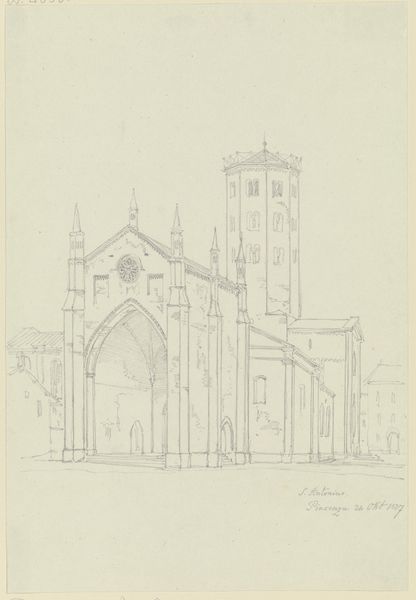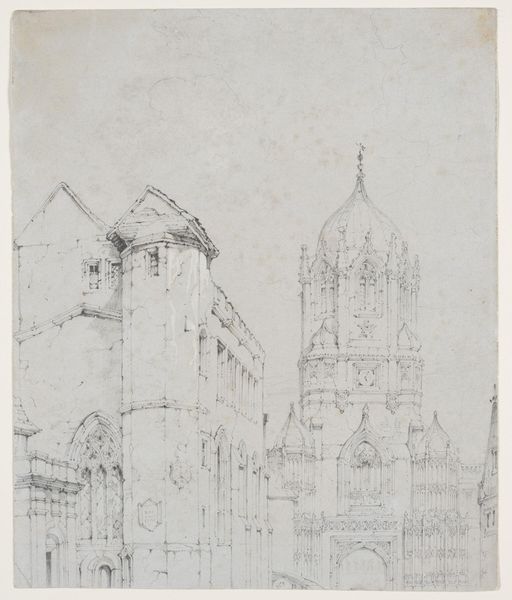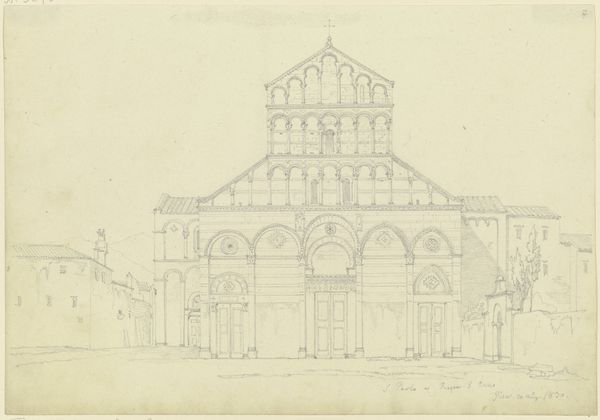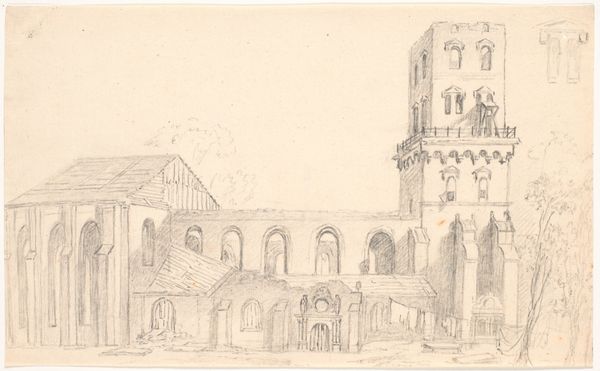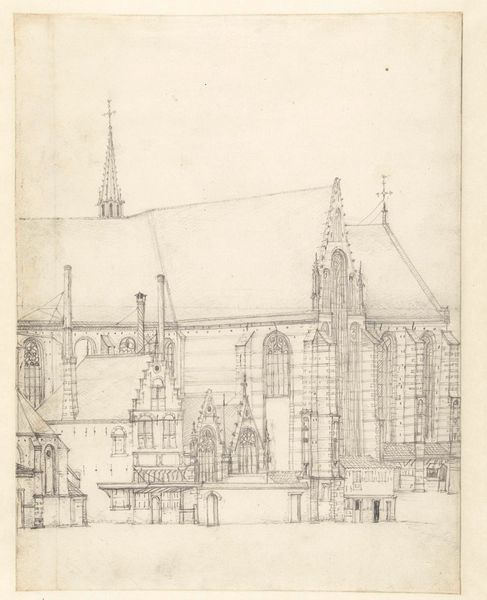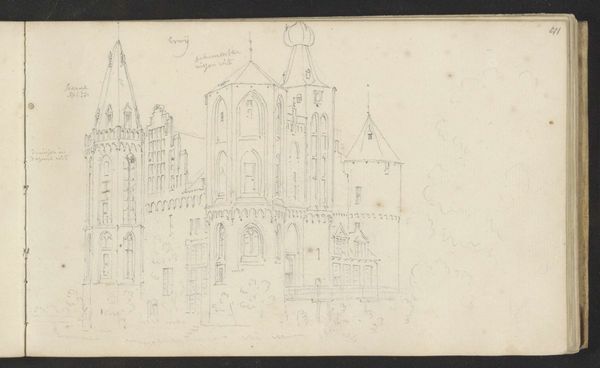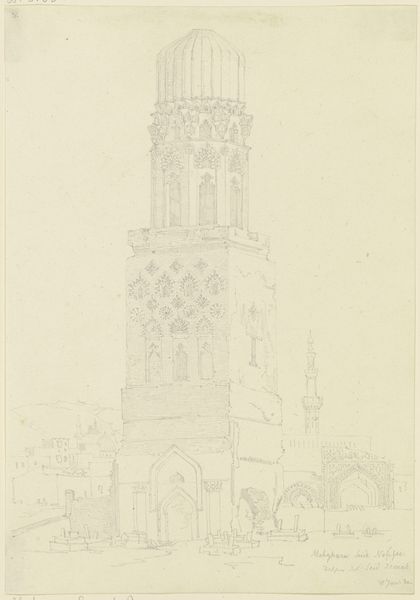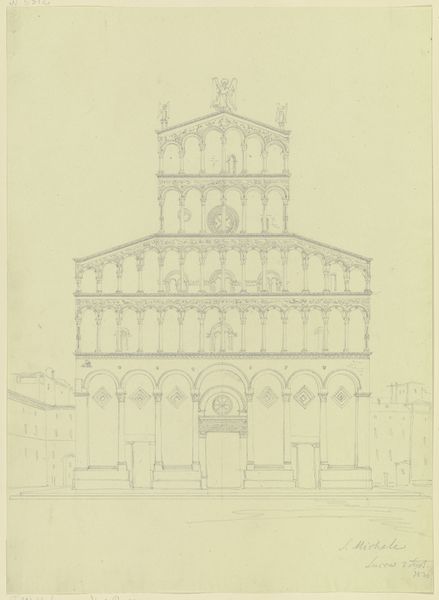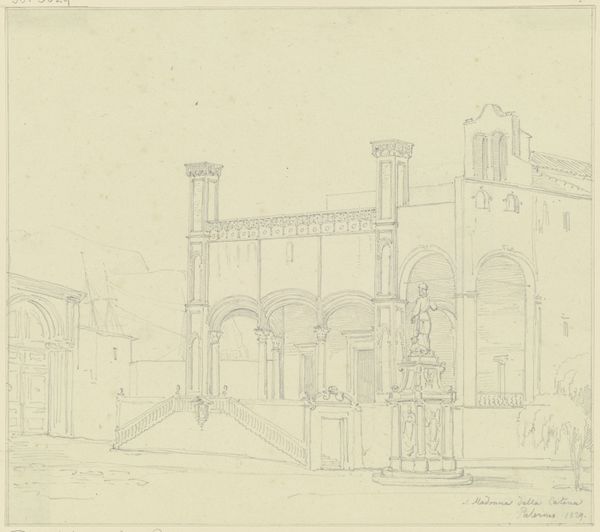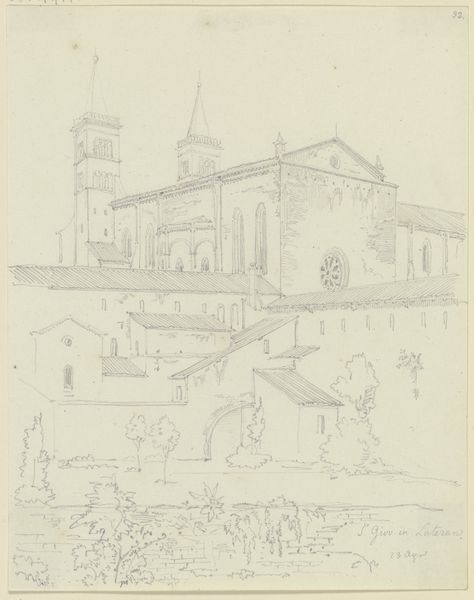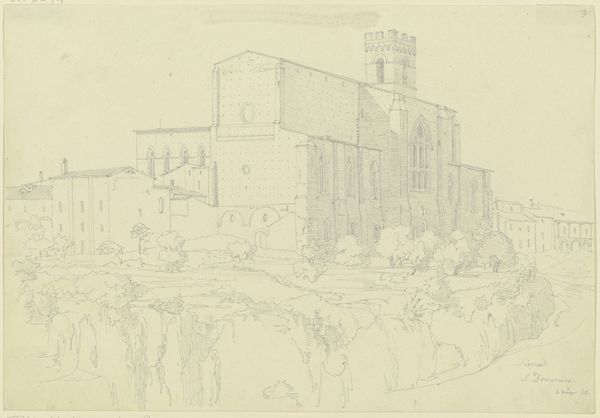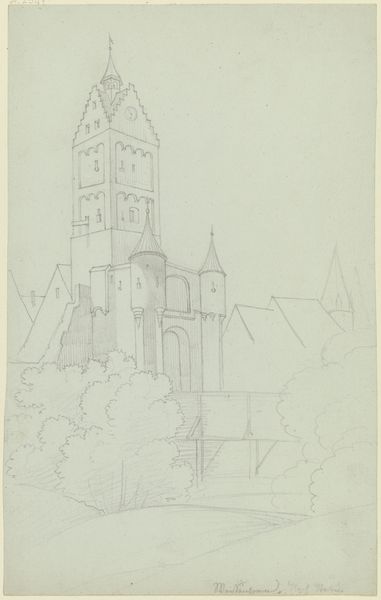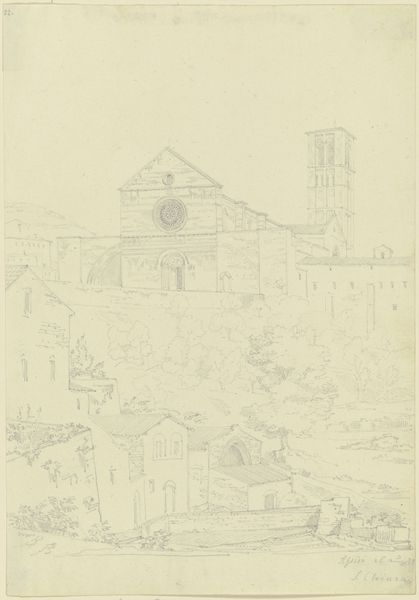
drawing, architecture
#
architectural sketch
#
drawing
#
aged paper
#
16_19th-century
#
quirky sketch
#
old engraving style
#
etching
#
personal sketchbook
#
german
#
sketchwork
#
architectural drawing
#
architecture drawing
#
storyboard and sketchbook work
#
architecture
Copyright: Public Domain
Curator: Looking at this work, my first thought is about the hidden stories within these aged lines. The delicate strokes feel like whispered secrets. Editor: Indeed. What we have here is a drawing entitled "S. Francesco in Assisi" by Friedrich Maximilian Hessemer, created around 1828. It's held here at the Städel Museum. It presents us with a very detailed architectural rendering of the Basilica. Curator: I'm struck by how ethereal it feels. The architectural details are all there, yet they almost dissolve into the aged paper, lending a dreamlike quality to the monument. It almost feels less about the specific building, and more about memory or the passage of time. Editor: That's a fascinating reading. Considering its time, this drawing speaks volumes about 19th-century approaches to religious architecture, specifically how such monuments symbolized power and spirituality intertwined within the rising German national identity of that era. The basilica itself embodies centuries of history. Hessemer captured it just after the Napoleonic era and before the rise of Italian unification, making it a poignant marker of cultural flux. Curator: Right, there is something about the precision of the architectural drawing style, the way he carefully captures each archway, pillar and the bell tower, juxtaposed against what I see as a looser, more human touch in the landscaping surrounding it. What do you make of it? Editor: I read the rendering technique itself as indicative of Hessemer's positionality. Architectural drawings in the 19th century were predominantly gendered male due to its association with power, reason and industrial progression, whereas looser sketches often created 'en plein air' were associated with the feminine past-times. Thus, the conjunction of these different representational styles asks for closer inspection of its ideological meaning making. Curator: It makes you wonder, what was Hessemer's intent in selecting the basilica? It provokes the complex and intertwined history of religion, architecture, and identity. Editor: Absolutely, these structures not only hold immense aesthetic appeal but also act as silent witnesses to shifting cultural and social landscapes, inviting us to contemplate the past through the lens of artistic interpretation. It's the type of piece where one can stand and contemplate history and Hessemer's vision all at once. Curator: Agreed, and I like ending on that reflective moment.
Comments
No comments
Be the first to comment and join the conversation on the ultimate creative platform.
